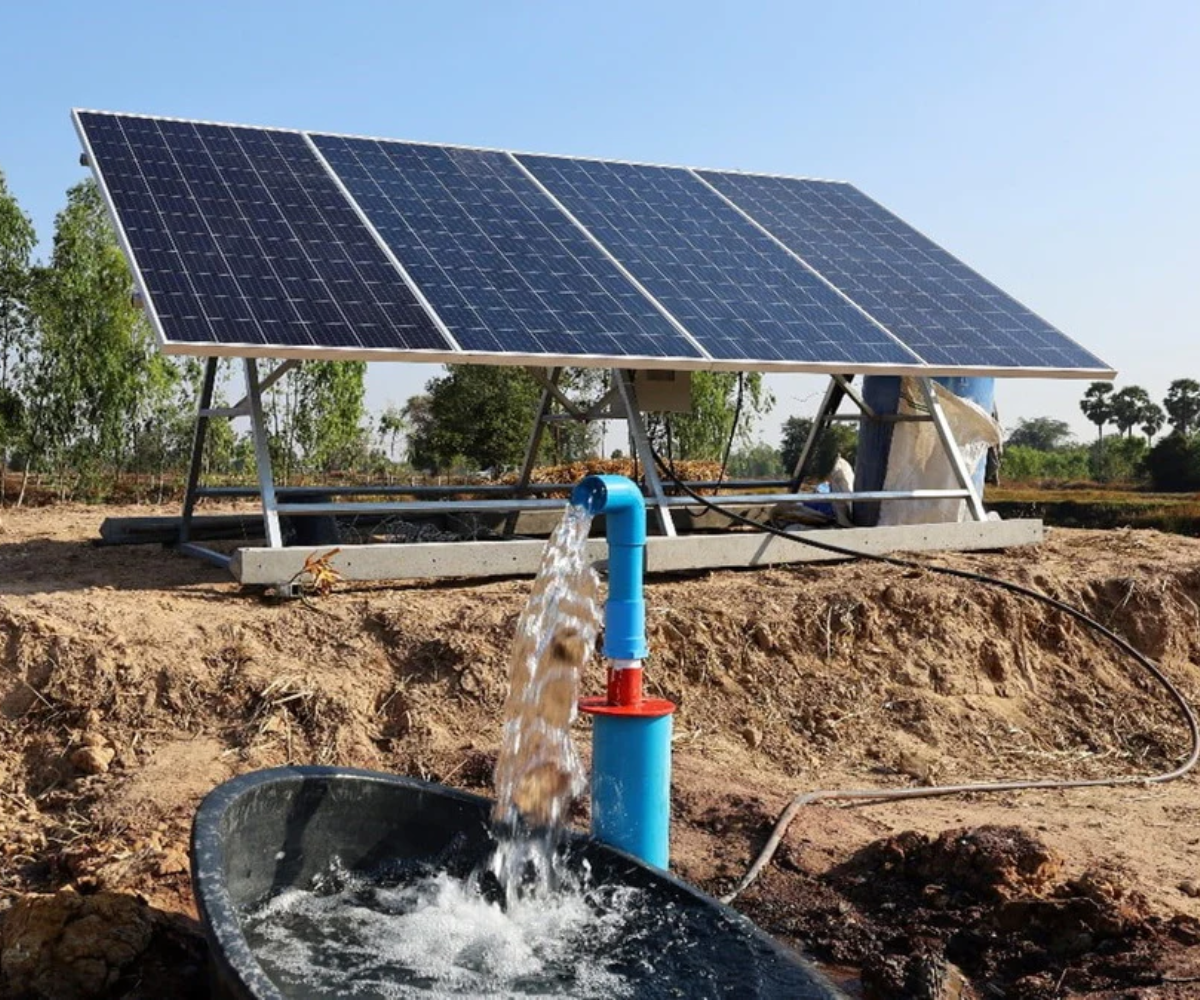Services We Provide
Solar water pumps use sunlight to power an electric motor, which then operates a pump to draw water. These pumps are a cost-effective and environmentally friendly alternative to traditional diesel or electric pumps, especially in areas with limited or unreliable electricity. They are particularly useful for irrigation, livestock watering, and other water transfer purposes.
- Renewable Energy Source:
Solar water pumps utilize solar energy, reducing reliance on fossil fuels and electricity.
- Low Operating Costs:
Once installed, solar pumps have minimal operating costs as they run on sunlight.
- Reduced Maintenance:
Solar pumps generally require less maintenance than traditional pumps due to their simpler design and fewer moving parts.
- Environmental Friendliness:
They are environmentally friendly as they do not produce emissions or use harmful fuels.
- Reliability:
Solar pumps can be reliable even in areas with unreliable power grids.
- Cost-Effective:
Solar pumps can be a more cost-effective solution for water pumping in areas with high electricity or diesel costs.
- Versatile Applications:
They can be used for various applications like irrigation, livestock watering, and water supply for communities.
- Solar Panels (PV array): Convert sunlight into electricity.
- Electric Motor: Powers the pump.
- Water Pump: Draws water from a source (well, stream, etc.).
- Pump Controller (Optional): Manages pump speed and output.
- Inverter (Optional): Converts DC power from solar panels to AC power for AC motors.
- Battery (Optional): Provides backup power for night-time operation or during cloudy conditions.
- AC Solar Pumps: Utilize alternating current (AC) and may require an inverter to convert DC power from solar panels.
- DC Solar Pumps: Use direct current (DC) directly from solar panels.
- Submersible Pumps: Designed to be submerged in the water source.
- Surface Pumps: Located above the water source.
- Irrigation: Providing water for crops and agriculture.
- Livestock Watering: Supplying water for animals.
- Water Supply for Communities: Providing clean water to remote areas or off-grid locations.
Easy Installation
Long Time to Use
- Cost-effectiveness:Once installed, solar pumps have no recurring costs for fuel or electricity, making them cheaper to operate than diesel or electric pumps in the long run.
- Reduced maintenance:Solar pumps have fewer moving parts than diesel pumps, leading to lower maintenance costs and fewer chances of wear and tear.
- Independence from the grid:They can be used in remote areas where electricity or diesel is unavailable or difficult to procure, providing a reliable water source even in locations without grid access.
- Environmental benefits:Solar pumps are environmentally friendly, reducing carbon emissions and reliance on fossil fuels.
- Submersible pumps:These pumps are designed to be placed underwater, making them suitable for boreholes and wells.
- Surface pumps:These pumps are placed above the water surface and are ideal for shallow wells, ponds, or rivers.
- DC pumps:These pumps run directly on DC power, which is generated by the solar panels, without the need for an inverter.
- AC pumps:These pumps require an inverter to convert the DC power from the solar panels to AC power, which is then used to operate the pump.

Services We Offer
We specialize in consulting in choosing and actually installing doing the of both full-cycle batteries.
- Satisfaction Value For Money Solution
- Vertical Axis Wind Turbine
- Horizontal Axis Wind Turbine
- Wind Mills
- Capicola ground round venison

